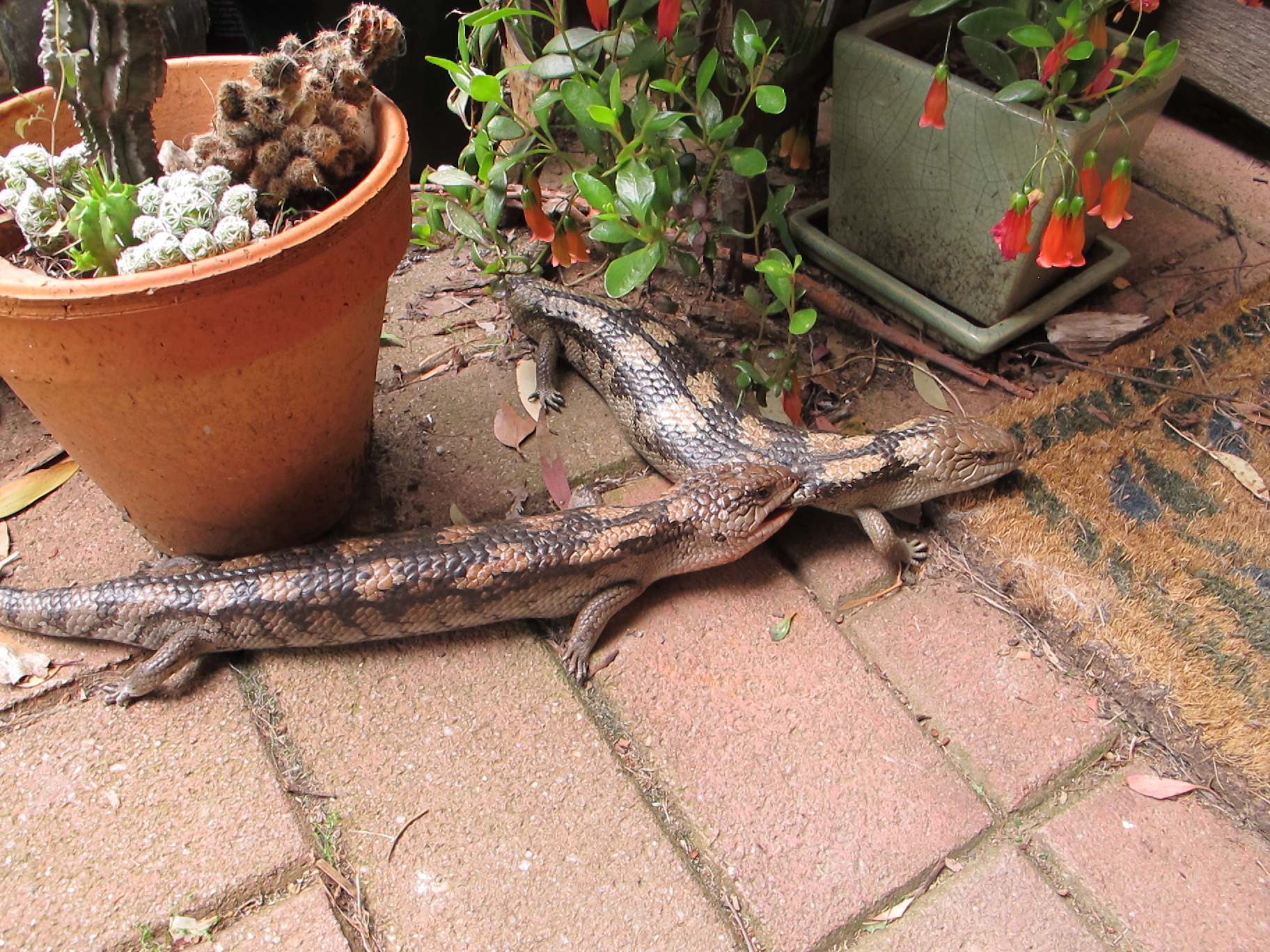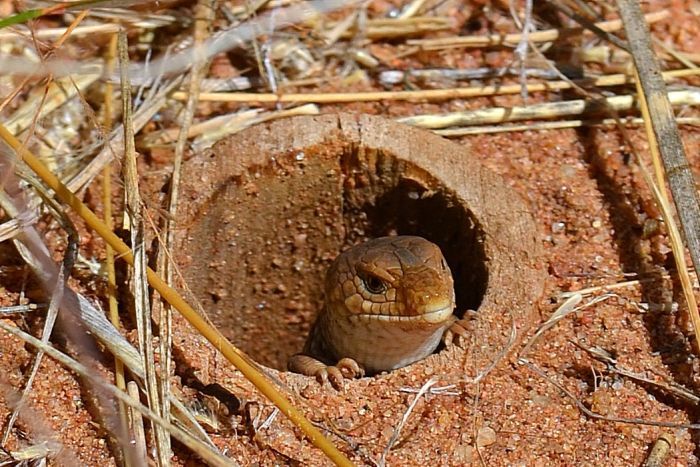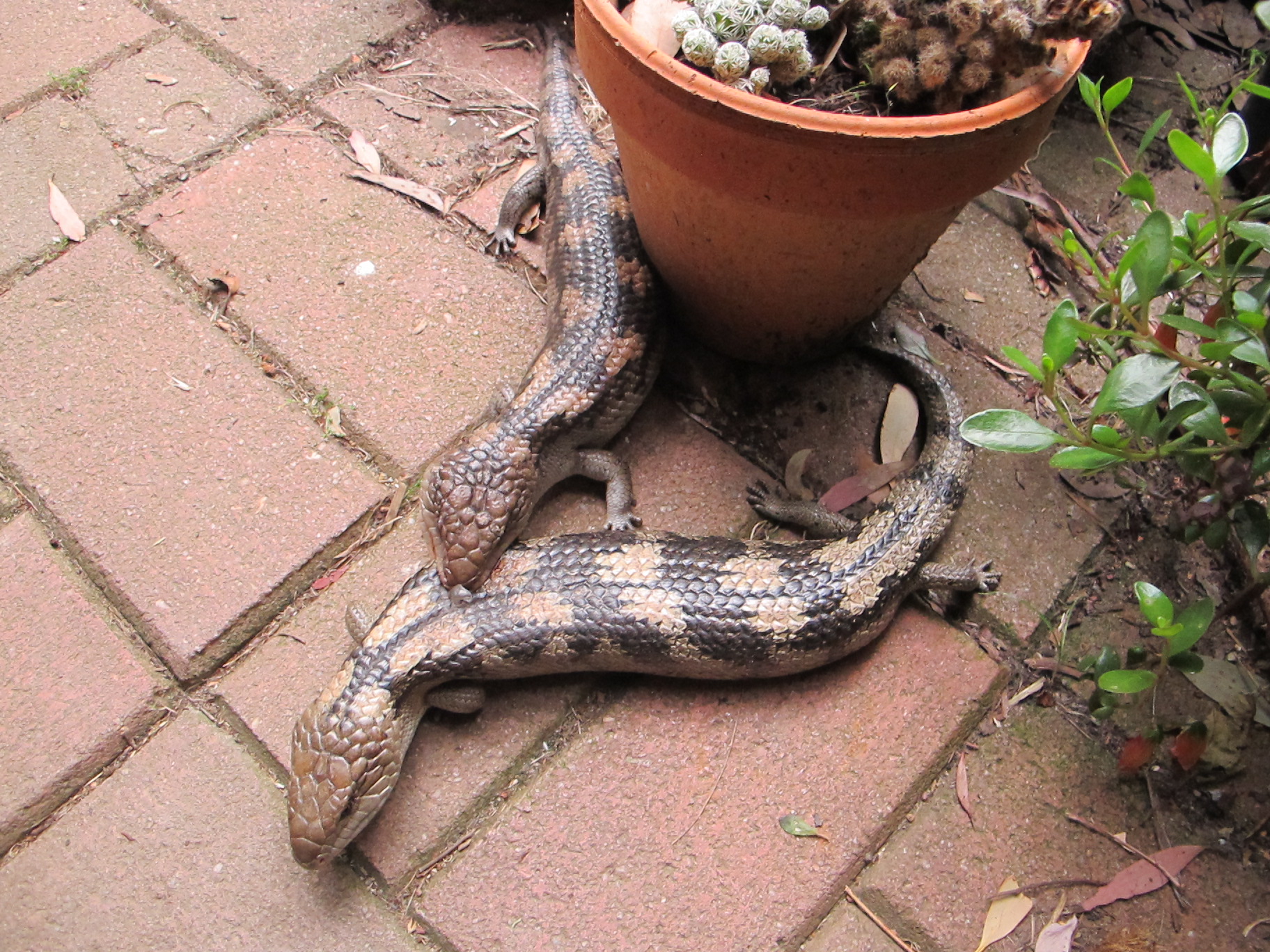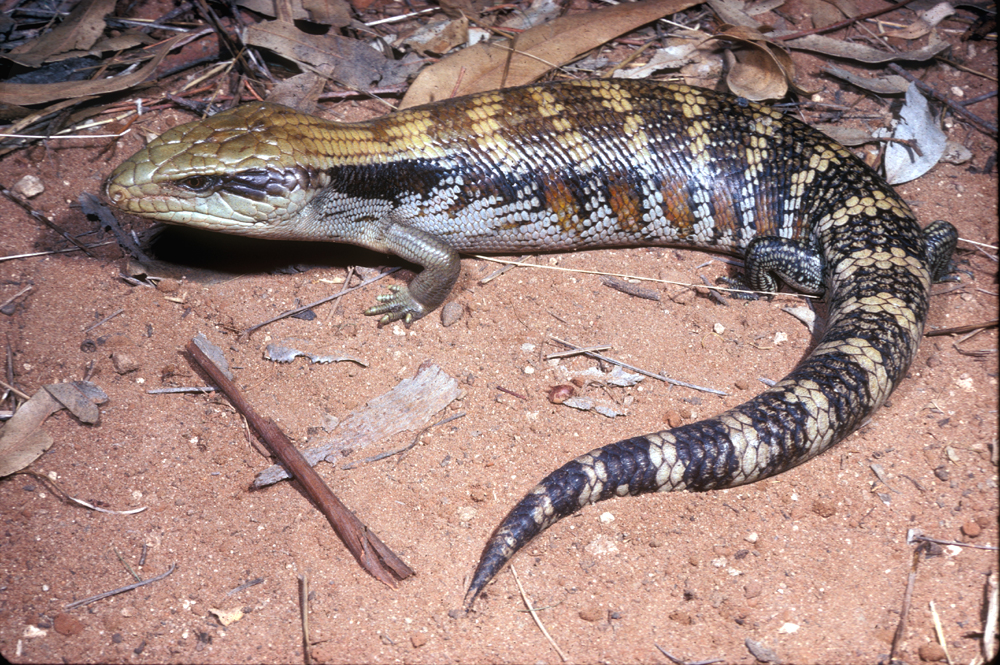This year we have discovered to our joy that our kitchen porch is a love nest for blue-tongue lizards. The photo was taken by my husband Chris – he spotted them in close contact which may have been mating, and went to grab the camera, stepping over them as he did so! When he returned, the blue-tongues were on the door mat, with one gripping the other in a very firm bite on the side of the body.

Blotched Blue-tongue lizards Tiliqua nigrolutea. Pic by Chris McLean
I posted the photo online to the Field Naturalists Club of Victoria and someone referred to the grip pictured as a “classic love bite”. A study of blue-tongue mating habits in Tasmania a few years ago recorded this grip as occurring before, during and sometimes after mating for over an hour! After mating, the blue-tongues return to their solitary habits, and the female gives birth three to five months later.
Blue-tongues do not lay eggs, they give birth to two or three live young that are ready to live independently as soon as they born. Blue-tongue lizards are actually a type of large skink; a member of the big lizard family called Scincidae which has hundreds of species ranging from the big blue-tongues down to the tiny little garden skinks. Some skinks are even legless! The Blue-tongues are distinguished from other skinks by their large size, large heads, short legs and tails and short fleshy tongues. The exception are the Pygmy Blue-tongues, which are fascinating story in their own right! Presumed extinct, a population of these tiny blue-tongues was discovered living in old spider burrows in unploughed grasslands in 1992. For more on their captive breeding program and ecology see here

A tiny relative – less than 20cm in length. Photo by Phil Ainsley SA Zoos.
The species on our grassy dry forest block is a Blotched Blue-tongue, a large blue-tongue that is looks very much like its close relative the Eastern Blue-tongue, although the eastern is more distinctively striped in pattern. Their behaviour and ecology is similar, except the Blotched Blue-tongue is a cool climate specialist, and can move about and forage at much lower temperatures than the Eastern.
We have only seen Blotched Blue-tongues on our block, but I have seen an Eastern Blue-tongue just a couple of kilometres away on Richardsons lane and on the Midland Highway near the Chocolate Mill.

This pic shows that the male is gripping so tightly some of the scales are coming off!
The recent warm weather has seen many blue-tongues on the move – my heart goes to my mouth when I see one crossing the road and it manages to cross safely. Many others are not so lucky and maimed blue-tongues are a common sight on our roads. The mating study I mentioned before said that in the spring breeding season approximately 95% of the road kill they examined was males – it seems they go out actively searching for the more sedentary females. Poor fellas!!
If it is safe to do so, you can pull over and assist a blue-tongue trying to make a crossing. Simply grasp the blue-tongue behind its armpits and pick it up with both hands, and deposit it on the side of the road it was heading for. Interestingly, I have never been hissed at or shown the blue tongue in the threat display. It is obviously stressful, as once a lizard urinated copiously all over my hands and sandals! As blue-tongues can live for twenty years or so, I figure this was a small price to pay to save a lizard from a senseless road death.
Besides roads, the other dangers faced by blue-tongues include snail baits, dogs and cats, lawn mowers, and fences. As blue-tongues love to eat slugs and snails, forget the use of snail baits in the garden! Luckily my dogs think blue-tongues are weird sort of snake so they say well away. Before you mow or use a brush cutter, it’s a good idea to walk the area you are going to treat, as once the machine starts the blue-tongues crouch, hiding still in the grass instead of running away.
We have an area of the garden surrounded by chicken wire. One summer, the dogs found a decomposed blue-tongue that had tried to squeeze through the wire and been trapped halfway. We found another blue-tongue just in time, and managed to cut it free with wire cutters. I can’t believe we still have the fence up – a festive Christmas holiday project will be to replace the fencing wire with something more wildlife-friendly.
On that note, I would like to wish my readers a safe and happy holiday season, filled with kindness and nature.
Edwards, A and Jones, SM (2003) Mating behaviour in the blotched blue-tongued lizard, Tiliqua nigrolutea, in captivity. Herpetofauna, 33 (2). pp. 60-64.
http://www.backyardbuddies.net.au/reptiles/lizards/blue-tongued-lizard

Eastern Blue-tongue lizard Tiliqua scincoides, pic by Mark Hutchinson
A lovely posts, Tanya. I was aghast last year to find a big bluetongue dead in one of my fruit tree nets; we’d been away so missed seeing it.
Thanks helen! Yes – aghast is a great word to describe my reaction too! Glad you enjoyed the post. : )